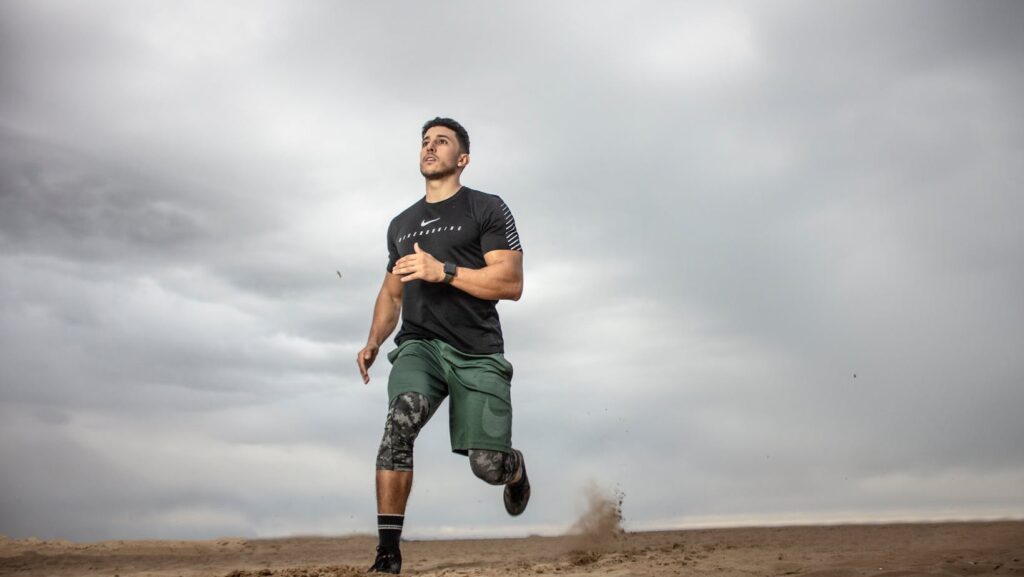In the digital age, the world of sports has expanded beyond the physical realm. Welcome to the era of esports, where virtual athletes compete fiercely, commanding the same dedication and discipline as their traditional counterparts. But there’s more to esports than just sitting and clicking; fitness plays a crucial role.
Esports fitness isn’t just about physical health—it’s also about mental agility, focus, and endurance. Like any athlete, esports players need to stay in top shape to perform at their best. This article delves into the fascinating intersection of esports and fitness, shedding light on how virtual athletes train for their competitive edge.
Esports Fitness
Esports fitness denotes a pivotal change, transcending the conventional boundaries of virtual gaming. It’s not solely about dexterity or strategic knowledge anymore; fitness plays a key role in determining a player’s performance.
The Link Between Physical Fitness and Gaming Performance
Contrary to popular belief, physical fitness has a direct impact on gaming performance. Games demand precision, reaction speed, and sustained focus. An unfit body tends to tire easily, negatively affecting these critical gaming skills.

Physically fit gamers demonstrate better concentration, faster reaction times, and longer endurance. For instance, ergonomically designed workouts help develop a strong core and sturdy back, offering resilience during long gaming sessions. Regular cardio exercises, in turn, enhance lung capacity, offering gamers a steady supply of oxygen, crucial for maintaining focus during intensive gaming.
Evolution of Fitness Routines for Gamers
Fitness routines for gamers have evolved radically over the years. Initially, the gaming community largely ignored the importance of physical fitness. However, emerging scientific research highlighting the impact of physical health on cognitive performance led to a shift in perception.
Fitness routines for gamers include exercises focusing on hand-eye coordination, reflexes, endurance, and mental health. For instance, programs like ‘Gamer Fitness’ tailor workout routines to meet the specific needs of esports athletes. These routines emphasize improving core strength, cardiovascular health, and hand agility, equipping gamers with the stamina and agility needed to excel in demanding gaming environments.
Similarly, mental health workouts help gamers deal with the stress and pressure of professional esports. Techniques like meditation and breathing exercises improve focus, reduce stress, and contribute to overall gaming performance. Collective efforts to promote gamer health and wellness are driving this transition towards incorporating fitness into esports culture. Subsequently, esports athletes are setting a precedence by embracing this fusion of traditional physical fitness with modern gaming techniques to deliver unmatched performance.
Health Rispects Unique to Esports Athletes
Esports athletes encounter specific health risks often overlooked in the realm of traditional sports. Concerns rooted in their predominantly sedentary lifestyle and extensive gaming sessions have led to the emergence of distinct health issues. This section provides an in-depth look at these risks and how they can be effectively managed.
Managing Sedentary Lifestyle Risks
Playing video games for extended periods means esports athletes live a largely sedentary lifestyle. Physical inactivity precipitates a myriad of health issues, with obesity, heart disease, and Type 2 diabetes being prominent risks. For example, esports athletes who spend 8-10 hours on a gaming seat accrue a higher risk of developing cardiovascular diseases than their peers who are physically active.

Additionally, chronic inactivity puts athletes at risk of muscle and bone deterioration. Extended periods in a stationary position can lead to conditions such as muscle atrophy or osteoporosis.
However, it’s possible to guard against these risks. Esports athletes can schedule short, regular breaks during training sessions to stretch and move around. Beyond this, incorporating full-body workouts into daily routines – spanning strength training, cardio, and flexibility exercises – can counter the adverse effects of a sedentary lifestyle.
Ergonomics and Posture
Ergonomics issues and poor posture round out the prime health risks esports athletes face. Long gaming sessions on non-ergonomic chairs and desks strain the back, neck, and shoulders, paving the way for chronic pain and complications such as repetitive stress injuries, carpel tunnel syndrome, and tendonitis. For instance, professional gamers who hunch over their keyboard for over 7 hours daily risk developing musculoskeletal disorders as compared to those who maintain a proper posture.
Programmed regular pauses to stretch, reposition, and rest can help mitigate these problems. However, the crux lies in employing ergonomic gaming setups. Esports athletes must select chairs, desks, and equipment that support proper spinal alignment, distribute weight evenly, and reduce strain on joints and muscles. Investing in adjustable chairs and desks, wrist supports, or monitor stands, for instance, can drastically improve posture and minimize related health risks.
Esports fitness isn’t just a passing trend; it’s a critical aspect of a player’s performance and longevity. Tailored fitness routines, focusing on core strength and cardiovascular health, are instrumental in enhancing endurance and overall health.

